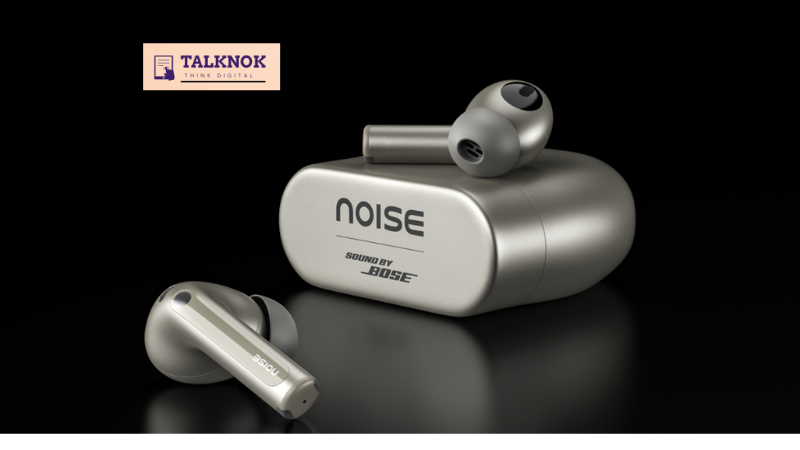RTX 5070 Vs RX 9070 XT – Is It Too Close!!

RTX 5070 Vs RX 9070 XT: Nvidia uses Ada Lovelace for the 40 series, and AMD uses RDNA 3 for the 7000 series. If the RTX 5070 is part of the next generation, maybe Blackwell for Nvidia? And AMD might have RDNA 4 or 5 for the RX 9000 series.
Let Us Focus on Performances of Both brands
For performance, each generation usually brings improvements. Nvidia might focus on ray tracing and DLSS, while AMD emphasizes raw rasterization and VRAM. The RTX 4070 has 12GB VRAM, so the 5070 might go up to 16GB. AMD’s 7900 XT has 20GB, so maybe the 9070 XT would have 24GB or more. But that’s just a guess.
Power consumption is another factor
Nvidia tends to be more power-efficient, but AMD is catching up. The 5070 might have a TDP around 200W, similar to the 4070. The 9070 XT could be higher, maybe 250-300W, depending on how much they push performance.
Features-wise
DLSS 3.5 or 4.0 for Nvidia with frame generation, and AMD’s FSR 3 or 4. Ray tracing performance might still favor Nvidia, but AMD could close the gap. Pricing is tricky. The 4070 launched at $599, so the 5070 might be similar. AMD’s 7900 XT was $899, so the 9070 XT could be in that range, maybe a bit lower if they’re competitive.
We must also mention that availability and driver support matter. Nvidia usually has better driver support and features for creators, while AMD might offer better value.
Choose Wisely
Also, considering the generational leaps. Nvidia’s 40 series had a significant jump in ray tracing and efficiency. AMD’s RDNA3 brought chiplet design. Next-gen might improve on that. Maybe both cards support HDMI 2.1 and DisplayPort 2.1. PCIe 5.0 support? Possibly.
What About 4K Gaming?
In terms of use cases, if the user is into 4K gaming, the VRAM and memory bandwidth will matter. Content creation might benefit from Nvidia’s CUDA cores. But again, this is speculative.
NVIDIA Vs AMD

NVIDIA and AMD are two of the biggest competitors in the GPU (graphics processing unit) and semiconductor industry. Both companies produce graphics cards for gaming, professional workstations, and data centers, but they have different strengths and weaknesses. Here’s a detailed comparison:
Productivity & Professional Work
- NVIDIA:
- Dominates in AI, machine learning (CUDA, Tensor Cores), and 3D rendering.
- Preferred for Blender, DaVinci Resolve, and AI tools like TensorFlow/PyTorch.
- NVENC encoder is better for streaming/recording.
- AMD:
- Catches up in content creation but lacks CUDA support.
- Better in OpenCL-based workloads and some Linux/professional drivers.
Best for Workstations?
- AI/ML, Video Editing: NVIDIA.
- Budget Workstation: AMD (Radeon Pro).
- NVIDIA:
- More polished drivers (especially for Windows).
- GeForce Experience offers useful features like ShadowPlay.
- AMD:
- Historically had driver issues, but improved with Adrenalin Software.
- More open-source friendly (better Linux support).
Market Position & Focus
- NVIDIA:
- Dominates the high-end GPU market, especially in AI, deep learning, and data centers.
- Strong focus on proprietary technologies like DLSS (Deep Learning Super Sampling), Ray Tracing, and CUDA (critical for AI/ML workloads).
- Leads in professional workstation GPUs (Quadro/NVIDIA RTX) and data center accelerators (A100, H100).
- AMD:
- More competitive in price-to-performance for mainstream gaming.
- Focuses on open standards like FidelityFX Super Resolution (FSR) and ROCm (for AI, though less mature than CUDA).
- Strong in CPU + GPU integration (APUs like Ryzen with Radeon Graphics).
Let Us Look Deep into the Comparison
The RTX 5070 and RX 9070 XT are hypothetical next-generation GPUs from NVIDIA and AMD, respectively. we can extrapolate potential features and performance based on current trends and generational improvements. Here’s a speculative comparison:
1. Architecture & Process Node
- RTX 5070 (NVIDIA): Likely based on the Blackwell architecture (successor to Ada Lovelace), manufactured on TSMC’s 3nm/4nm process for improved efficiency and transistor density.
- RX 9070 XT (AMD): Possibly built on RDNA 4 or RDNA 5, using a refined chiplet design and TSMC’s 3nm/4nm node to boost performance-per-watt.
2. Performance
- Rasterization: AMD traditionally focuses on raw rasterized performance. The RX 9070 XT could rival NVIDIA’s high-end offerings (e.g., RTX 5080) in 4K gaming, leveraging increased compute units and memory bandwidth.
- Ray Tracing: NVIDIA will likely retain an edge here, with dedicated RT cores and DLSS enhancements. The RTX 5070 might offer 2x ray-tracing performance over the RTX 4070.
VRAM:
- RTX 5070: 16GB GDDR7 (256-bit bus, ~700 GB/s bandwidth).
- RX 9070 XT: 20-24GB GDDR7 (320-bit bus, ~800 GB/s bandwidth).
3. Features
NVIDIA RTX 5070:
- DLSS 4.0: Enhanced AI upscaling with better frame generation.
- Improved RT Cores: Better path tracing for games like Cyberpunk 2077.
- CUDA & Creator Tools: Better support for AI workloads (Stable Diffusion, Blender).
AMD RX 9070 XT:
- FSR 4: Competing with DLSS, possibly integrating hardware-accelerated frame generation.
- Hybrid Ray Tracing: Improved RT performance via RDNA 4/5 optimizations.
- Anti-Lag+: Reduced latency for competitive gaming.
4. Power Efficiency
- RTX 5070: ~200-220W TDP, leveraging NVIDIA’s efficiency gains.
- RX 9070 XT: ~250-300W TDP, prioritizing raw performance over efficiency.
5. Price & Value
- RTX 5070: Likely 599−599−699 (similar to RTX 4070/4080 pricing).
- RX 9070 XT: Potentially 799−799−899, undercutting NVIDIA’s high-end while offering more VRAM.
6. Target Audience
- RTX 5070: Ideal for gamers prioritizing ray tracing, DLSS, and content creation.
- RX 9070 XT: Suited for 4K/1440p gamers needing high VRAM for future-proofing and competitive rasterization.
Final Thoughts Before you make a decision
- Choose RTX 5070 if: You want cutting-edge ray tracing, AI features, and better efficiency.
- Choose RX 9070 XT if: You prefer raw performance, more VRAM, and competitive pricing.
- AMD offers better value in many cases, but NVIDIA leads in performance, features, and ecosystem. Your choice depends on budget, use case, and preference for proprietary vs. open technologies.
*Note: Actual specs, performance, and pricing will depend on official announcements. Keep an eye on 2024-2025 releases!






